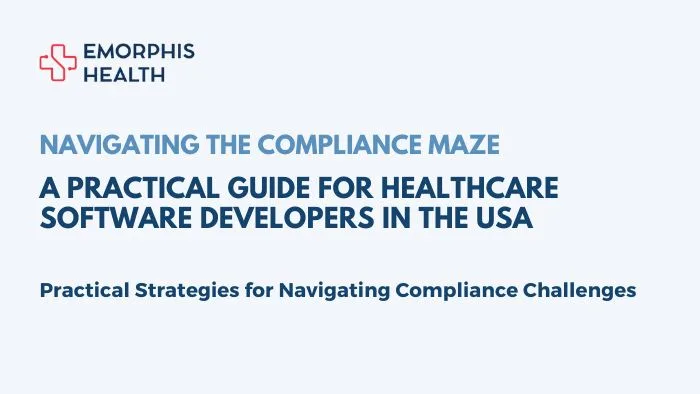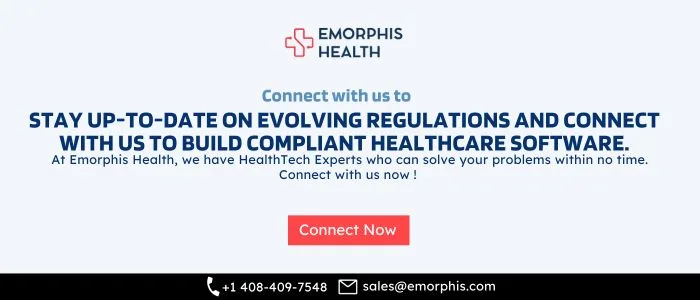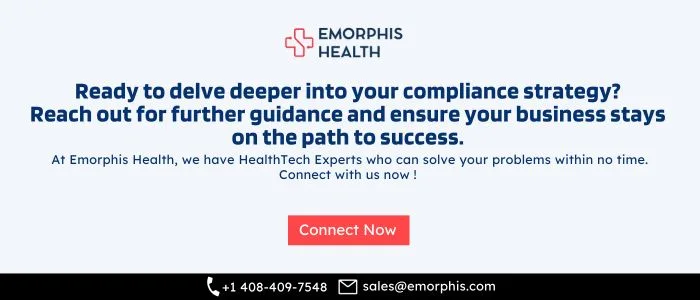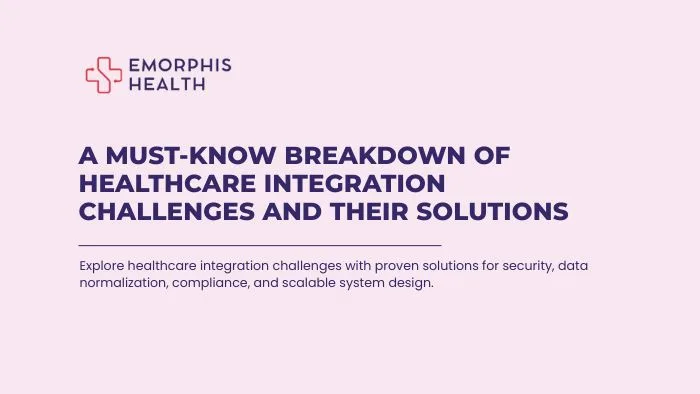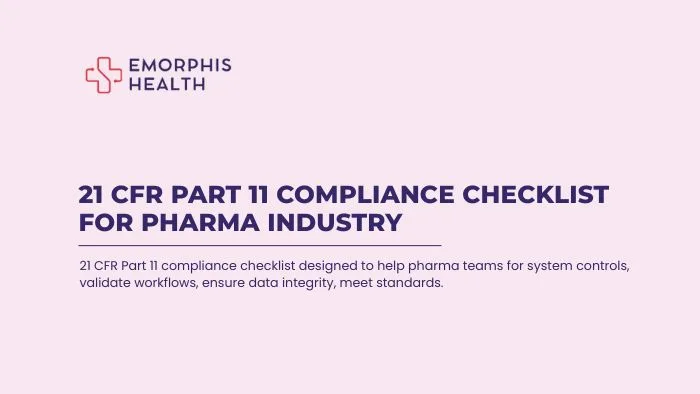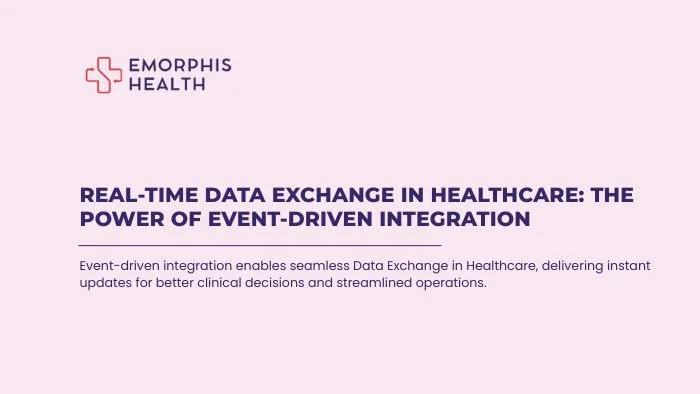The Compliance Conundrum for Healthcare Developers
See Contents
- 1 The Compliance Conundrum for Healthcare Developers
- 2 Demystifying Key Regulations: HIPAA – Your Guardian of Patient Privacy
- 3 HITRUST: Bolstering Your HIPAA Defenses with a Unified Framework
- 4 GDPR: Navigating the Global Data Seas with Your Healthcare Software
- 5 Navigating the Regulatory Archipelago: Other Relevant Laws for Healthcare Developers
- 6 Practical Tips for Developers: Building a Culture of Compliance in Healthcare Software
- 7 Conclusion: Your Compass on the Road to Compliant Healthcare Software
- 8 Annexure 1
- 9 Navigating the Regulatory Archipelago: Key Requirements and Resources for Developers
Imagine this, you’re a talented healthcare software developer, crafting the next revolutionary medical app. Data flows through your lines of code, promising improved patient care and streamlined workflows. But lurking in the shadows of innovation, a monstrous beast growls: the ever-evolving labyrinth of US healthcare regulations.
HIPAA, HITRUST, GDPR – these acronyms haunt your dreams, threatening to cripple your project with fines and legal woes.
Navigating this compliance maze can feel like scaling Mount Everest in flip-flops.
A recent survey by HIMSS Analytics found that 78% of healthcare organizations struggle to maintain compliance with data privacy regulations. This isn’t just a headache – it’s a $5.2 billion annual burden on the industry, according to the Ponemon Institute.
But fear not, intrepid developer!
This article is your sherpa, guiding you through the treacherous terrain of healthcare regulations. We’ll equip you with practical tips, demystify key laws, and empower you to build compliant, future-proof software that elevates healthcare, not your stress levels.
So, pack your metaphorical crampons, tighten your virtual coding belt, and prepare to conquer the compliance summit. The road ahead may be steep, but the view from the top is worth every line of compliant code.
Key Takeaways
- Healthcare regulations are complex and costly, posing a significant challenge for developers.
- This white paper offers practical guidance to navigate compliance and build successful healthcare software.
- By embracing compliance, developers can contribute to a secure and innovative healthcare ecosystem.
Demystifying Key Regulations: HIPAA – Your Guardian of Patient Privacy
In the realm of US healthcare regulations, HIPAA reigns supreme. The Health Insurance Portability and Accountability Act of 1996 stands as a formidable fortress, protecting the privacy and security of patient health information (PHI).
Let’s unravel its core principles and translate them into practical tips for developers:
HIPAA’s Core Principles:
- Privacy Rule: Governs the use and disclosure of PHI, ensuring patients have control over their sensitive data.
- Security Rule: Mandates safeguards to protect electronic PHI (ePHI) from unauthorized access, disclosure, alteration, or destruction.
Developer’s Guide to HIPAA Compliance:
1. Access Controls:
- Implement role-based access control (RBAC) to restrict data access to authorized users only.
- Enforce strong password policies and multi-factor authentication.
- Regularly review and update access privileges.
2. Encryption:
- Encrypt ePHI both at rest (stored data) and in transit (data in motion).
- Use industry-standard encryption algorithms like AES 256-bit.
- Implement proper key management practices.
3. Breach Notification:
- Develop a comprehensive breach response plan.
- Notify affected individuals and the HHS within 60 days of discovering a breach.
- Conduct thorough incident investigations and implement corrective actions.
Real-World Scenario
Imagine you’re developing a telehealth app that stores patient medical records.
HIPAA Compliance Measures:
- Encrypt all patient data, including medical history, diagnoses, and medications.
- Mandate users to generate robust passwords and activate multi-factor authentication.
- Implement audit trails to track data access and modifications.
- Conduct regular vulnerability assessments and penetration testing.
- Train developers on HIPAA requirements and best practices.
Remember: HIPAA compliance isn’t a one-time checkbox. It’s an ongoing commitment to safeguarding patient privacy. By integrating these principles into your development process, you’ll build trust, protect patient data, and contribute to a more secure healthcare ecosystem.
HITRUST: Bolstering Your HIPAA Defenses with a Unified Framework
While HIPAA lays the foundation for healthcare data security, HITRUST rises like a formidable castle, built upon those foundations and offering an additional layer of protection. Imagine it as a comprehensive blueprint for achieving top-notch security and compliance, streamlining your journey as a developer and safeguarding sensitive patient data.
HITRUST as a HIPAA Booster:
Think of HITRUST as a one-stop shop for compliance validation. It incorporates HIPAA requirements alongside numerous industry best practices and regulatory controls, covering areas like:
- Threat Management
- Data Privacy
- Incident Response
- Business Continuity
Benefits for Developers and Healthcare Organizations:
- Reduced Compliance Burden: By achieving HITRUST certification, you demonstrate adherence to multiple regulations, potentially reducing audits and administrative overhead.
- Enhanced Security Posture: HITRUST’s rigorous framework elevates your overall security posture, minimizing the risk of data breaches and protecting patient privacy.
- Competitive Advantage: HITRUST certification serves as a badge of honor in the healthcare IT market, boosting your credibility and attracting clients seeking top-tier security.
HITRUST Compliance Roadmap for Developers
Achieving HITRUST certification isn’t a solo climb, but a collaborative journey. Here’s how you, as a developer, can contribute:
- Understand the HITRUST CSF: Familiarize yourself with the HITRUST Control Framework (CSF), identifying relevant controls your software should address.
- Conduct a Gap Analysis: Evaluate your current development practices and technologies against HITRUST requirements, identifying areas for improvement.
- Implement Appropriate Controls: Integrate necessary controls into your development cycle, such as access control mechanisms, data encryption, and robust logging practices.
- Document and Secure: Maintain detailed documentation of your security measures and procedures, keeping your organization accountable and prepared for audits.
- Partner with a HITRUST Expert: Consider collaborating with a HITRUST compliance consultant who can guide you through the process and ensure successful certification.
Remember: HITRUST compliance isn’t just a tick-box exercise. It’s a continuous commitment to best-in-class security. By actively integrating these steps into your development process, you can contribute to a more secure healthcare landscape for developers, organizations, and most importantly, patients.
According to HITRUST, organizations that achieve HITRUST certification experience a 33% reduction in cyberattacks and a 62% reduction in the overall cost of compliance. So, the ROI for embracing HITRUST is clear – both in terms of security and efficiency.
While HIPAA and HITRUST reign supreme in the US, a new wave of compliance challenges washes ashore from across the Atlantic: GDPR (General Data Protection Regulation). Don’t let its European origin lull you into a false sense of security. The GDPR’s extraterritorial reach can ensnare developers working on US healthcare software if they handle the data of EU citizens, so don’t underestimate its impact.
GDPR’s Global Grip:
Imagine your healthcare app serving patients worldwide. Even if your headquarters reside in the US, handling EU citizen data triggers GDPR compliance obligations. This means ensuring robust data protection measures, regardless of your server location or application functionality.
Potential Impact on US Healthcare Data:
- Increased Burden: Developers must adapt their practices to address GDPR requirements like data minimization, user consent, and data portability.
- Potential Fines: Non-compliance can lead to hefty fines, reaching up to €20 million or 4% of your global annual turnover – a heavy price for regulatory oversight.
- Competitive Advantages: Demonstrating GDPR compliance can enhance your reputation and attract clients concerned with global data privacy.
Steering Your Software towards GDPR Compliance
To navigate these international waters, equip your development team with these practical strategies:
1. Data Mapping and Minimization
- Identify and track all EU citizen data your software processes.
- Minimize data collection and storage to only what’s essential for functionality.
- Implement clear and granular user consent mechanisms for data collection and usage.
2. Transparency and User Control
- Provide easily accessible privacy policies and data subject rights information (e.g., access, rectification, erasure) in a clear and concise format.
- Enable users to readily exercise their data subject rights within your software.
3. Data Security and Portability
- Implement robust security measures to protect EU citizen data from unauthorized access, disclosure, or alteration.
- Allow users to readily download their data in a structured, commonly used format for portability.
Remember: GDPR compliance isn’t a one-time voyage. It’s an ongoing journey of vigilance and adaptation. By integrating these strategies into your development process, you can build software that respects global data privacy regulations, safeguards patient data, and sets you apart in the increasingly interconnected healthcare landscape.
According to a 2023 survey by Forrester, 43% of US companies are still struggling to fully comply with GDPR requirements. Don’t join the majority – equip yourself with the knowledge and tools to stay ahead of the curve!
Refer to Annexure 1 to find complete information related to the above Healthcare regulations and compliance in a table format.
While HIPAA, HITRUST, and GDPR take center stage in the healthcare compliance landscape, a constellation of other regulations lurks beneath the surface. As a developer, being aware of these additional stars in the sky can help you chart a clear and compliant course.
A. HITECH Act
This act incentivizes healthcare providers to adopt and meaningfully use certified electronic health records (EHRs). Developers working on EHR functionality should be familiar with HITECH’s data privacy and security requirements, as well as its meaningful use criteria.
B. FDA Regulations
If your software touches medical devices or diagnostic tools, you’ll need to navigate the intricate waters of FDA regulations. These regulations ensure the safety and efficacy of medical products, so developers must understand their specific applicability to their software and comply with relevant testing and approval processes.
C. State-Specific Privacy Laws
The US healthcare landscape is a patchwork quilt of diverse state-specific privacy laws, adding another layer of complexity. Some states, like California and Massachusetts, have stringent data privacy regulations that overlap with and sometimes even surpass HIPAA. Therefore, developers should be aware of the specific privacy laws applicable to their target markets and ensure their software complies with all relevant requirements.
Practical Tips for Developers: Building a Culture of Compliance in Healthcare Software
Compliance isn’t a hurdle in the innovation race; it’s the paved path to success in healthcare software. For developers, integrating compliance into every step of the software development lifecycle (SDLC) is crucial for protecting sensitive patient data and building trust with stakeholders. Let’s equip you with practical tips to weave compliance into the fabric of your development process:
Compliance Checklist for the SDLC
1. Requirements Gathering
- Identify legal and regulatory requirements applicable to your project.
- Collaborate with legal and compliance experts to design features and functionalities that comply with relevant regulations.
- Conduct privacy impact assessments to identify potential risks and mitigations.
2. Design and Development
- Choose secure architectures and technologies with robust data encryption and access controls.
- Implement least-privilege access models and role-based authorization.
- Design for security with features like secure logging, auditing, and intrusion detection.
3. Testing and Integration
- Conduct rigorous security testing throughout the development cycle, including penetration testing and vulnerability assessments.
- Integrate compliance testing as part of your continuous integration/continuous delivery (CI/CD) pipeline.
- Ensure clear and detailed documentation of security measures and testing results.
4. Deployment and Maintenance
- Implement secure deployment practices with version control and rollback mechanisms.
- Develop a comprehensive incident response plan for handling data breaches and security vulnerabilities.
- Stay up-to-date with evolving regulations and update your software accordingly.
Resources and Tools
- National Institute of Standards and Technology (NIST) Cybersecurity Framework: https://www.nist.gov/cyberframework
- Health Information Trust Alliance (HITRUST): https://hitrustalliance.net/product-tool/hitrust-csf/
- Open Web Application Security Project (OWASP): https://owasp.org/
Real-World Example
Imagine a team developing a telehealth app. They implemented the following compliance measures:
- Data encryption: All patient data, including medical records and video consultations, is encrypted at rest and in transit.
- Multi-factor authentication: Users need to provide two verification factors (e.g., password and fingerprint) to access the app.
- Regular security audits: They conduct independent security audits by external experts to identify and address vulnerabilities.
Building a Culture of Compliance
Compliance isn’t a one-time project; it’s a continuous commitment. Foster a culture of compliance within your development team by:
- Providing regular training and awareness sessions on relevant regulations.
- Empowering developers to raise concerns and ask questions about compliance.
- Rewarding and recognizing proactive efforts towards building secure and compliant software.
According to a Ponemon Institute study, organizations with a strong culture of compliance experience 56% fewer data breaches. The ROI is clear: investing in compliance not only protects data but also enhances business reputation and long-term success.
Remember: By embracing these practical tips and fostering a culture of compliance, you can be a champion of secure and trusted healthcare software, putting patients’ privacy and safety at the forefront of every line of code.
Conclusion: Your Compass on the Road to Compliant Healthcare Software
Navigating the labyrinthine world of healthcare regulations can feel daunting, but remember, you’re not alone. This white paper has equipped you with a compass, pointing you toward building secure, compliant, and impactful healthcare software. Let’s recap the key takeaways:
- Healthcare regulations matter: HIPAA, HITRUST, GDPR, and others exist to protect sensitive patient data and build trust in the healthcare ecosystem. Compliance isn’t just a box to tick; it’s a vital ethical and legal responsibility.
- Compliance is a journey, not a destination: Integrate compliance practices into every step of your software development lifecycle, from requirements gathering to deployment and maintenance. It’s an ongoing journey, but one that leads to secure and trustworthy software.
- Practical tips empower you: This white paper has offered a treasure trove of resources and recommendations, from checklists and real-world examples to valuable tools and training opportunities. Use them to navigate the compliance landscape with confidence.
- Building a culture of compliance is key: Foster a collaborative environment where developers understand the importance of compliance and proactively participate in building secure software.
Remember, adhering to compliance regulations isn’t a burden; it’s a privilege. By prioritizing patient privacy and data security, you can become a force for positive change in the healthcare landscape. So, embrace the challenge, utilize the resources provided, and embark on your journey toward building truly compliant and impactful healthcare software.
According to HIMSS Analytics, healthcare organizations that prioritize a culture of compliance report 28% higher patient satisfaction. The benefits are clear – compliance fosters trust, improves patient care, and ultimately leads to a more thriving healthcare ecosystem for everyone.
Annexure 1
| Regulation | Key Requirements | Relevant Government Websites/Resources |
| HIPAA | Privacy Rule: Control access and disclosure of PHI, and provide patients with access and control over their data.
Security Rule: Implement technical safeguards (encryption, access controls) and organizational safeguards (training, risk assessments) to protect ePHI. |
Health Insurance Portability and Accountability Act (HIPAA) |
| HITRUST | Compliance with HIPAA and additional industry best practices.
Focus on risk management, business continuity, and incident response. Certification process available for demonstrating compliance. |
HITRUST Alliance |
| GDPR | Data minimization: Collect and store only essential data.
User consent: Obtain clear and informed consent for data collection and usage. Data subject rights: Allow users to access, rectify, erase, and port their data. Security measures: Implement robust security controls to protect data. |
General Data Protection Regulation (GDPR) |
| HITECH Act | Meaningful use criteria: EHRs must demonstrate functionalities improving patient care and public health.
Data privacy and security requirements. |
Office of the National Coordinator for Health Information Technology (ONC)
Meaningful Use: CMS.Gov |
| FDA Regulations | Premarket approval and marketing requirements for medical devices and diagnostic tools.
Software that impacts medical devices must comply with relevant regulations. |
U.S. Food and Drug Administration (FDA)
Center for Devices and Radiological Health (CDRH) |
| State-Specific Privacy Laws
|
Vary depending on state.
California (CCPA) and Massachusetts (MDCP) have strong data privacy protections. Developers should check specific requirements for their target market. |
National Conference of State Legislatures (NCSL)
International Association of Privacy Professionals (IAPP) |
This table provides a quick reference to key requirements and resources for each regulation. Remember, specific healthcare compliance requirements may vary, and consulting with legal and compliance experts for detailed guidance is always recommended.
Ready to navigate healthcare regulations and landscapes confidently? Let’s discuss your unique needs and ensure your compliance strategy is tailored to perfection. Contact us today!

